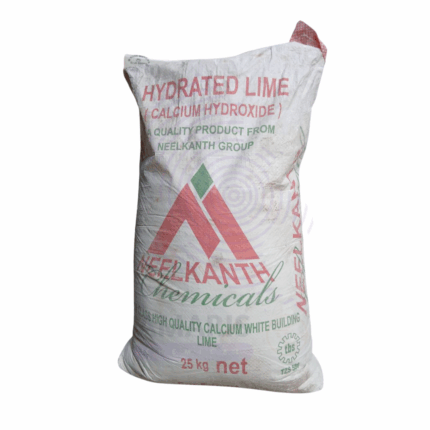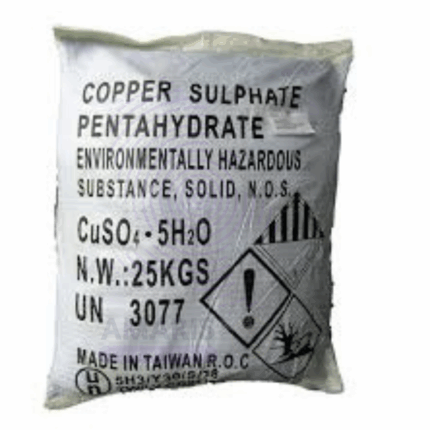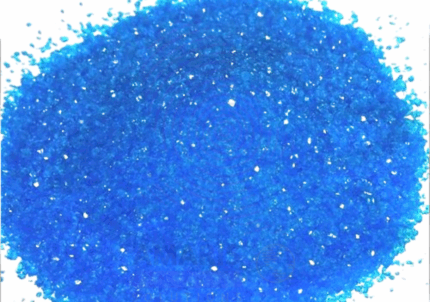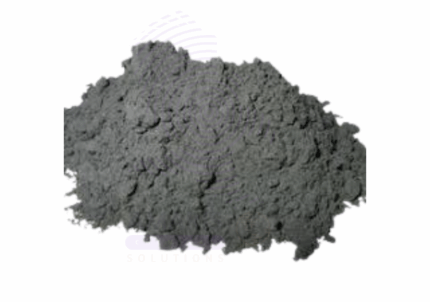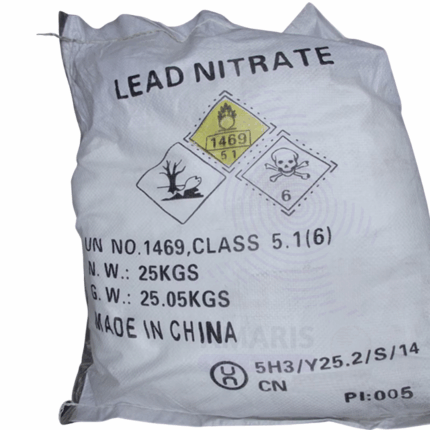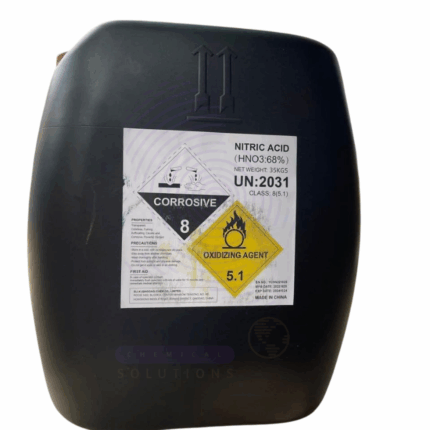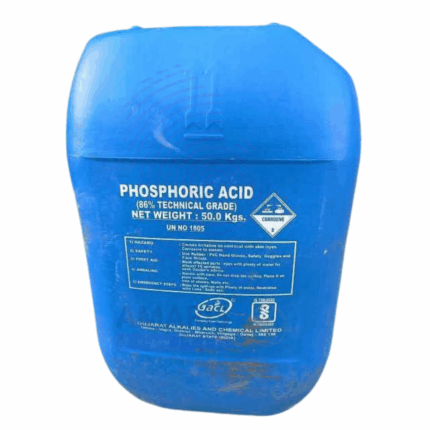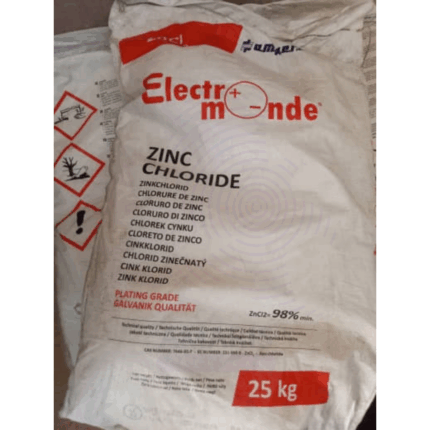
clinostat clock type
$ 50.55 Original price was: $ 50.55.$ 50.31Current price is: $ 50.31.
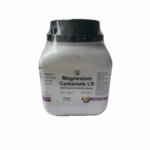
Magnesium Carbonate Extra Pure
$ 19.00 Original price was: $ 19.00.$ 18.89Current price is: $ 18.89.
Cupric Sulphate Anhydrous
Whatsapp Order
Cupric Sulphate Anhydrous (Copper(II) sulfate, anhydrous form) is a blue to green crystalline powder that is highly soluble in water. It is an inorganic compound consisting of copper, sulfur, and oxygen with the formula CuSO₄. Unlike its hydrated counterpart (CuSO₄·5H₂O), the anhydrous form contains no water molecules. It is widely used in agriculture, industry, and chemical manufacturing due to its fungicidal, algicidal, and chemical reactivity properties. The compound serves as a precursor to many copper salts and catalysts.
Description
Table of Contents
Toggle
Cupric Sulphate Anhydrous Uses
Primary Uses
- Agriculture
- Used as a fungicide and algaecide for crops to control fungal diseases such as mildew, blight, and root rot.
- Acts as a micronutrient fertilizer supplement providing copper, essential for plant metabolism and growth.
- Used in animal feed as a trace mineral additive for copper deficiency prevention.
- Chemical Industry
- Utilized as a raw material for the manufacture of other copper compounds such as copper salts and catalysts.
- Used in chemical laboratories for reagent preparation and analytical tests, including Fehling’s and Benedict’s solutions for sugar detection.
- Employed as a mordant in dyeing and printing textiles.
Secondary Uses
- Water Treatment
- Applied as an algicide to control algae growth in water bodies, reservoirs, and industrial cooling systems.
- Electroplating
- Used as an electrolyte component in copper plating baths to deposit copper metal coatings.
- Veterinary Medicine
- Included in certain topical antiseptic and antimicrobial formulations for livestock.
- Pigment Production
- Acts as a pigment in ceramics, paints, and inks due to its distinctive blue color.
KEY PRODUCT FEATURES
1. Basic Identification Attributes
- Chemical Name (IUPAC): Copper(II) sulfate
- Common/Trade Name: Cupric Sulphate Anhydrous, Copper(II) sulfate anhydrous
- CAS Number: 7758-98-7
- HS Code: 2833.29.00
- Molecular Formula: CuSO₄
- Synonyms:
- Copper sulfate
- Blue vitriol (typically for hydrated form)
2. Physical & Chemical Properties
- Physical State: Crystalline powder
- Color & Odor: Blue-green; odorless
- Melting Point: Decomposes at 110°C (loses water if hydrated)
- Boiling Point: Not applicable (decomposes on heating)
- Density: ~3.6 g/cm³
- Solubility:
- Highly soluble in water (specially hydrated form)
- Insoluble in ethanol and other organic solvents
- Stability: Stable under normal conditions; hygroscopic (absorbs moisture from air)
3. Safety & Hazard Attributes
- Hazard Class (GHS): Acute toxic, harmful if swallowed or inhaled; hazardous to aquatic life
- NFPA Ratings:
- Health: 2
- Flammability: 0
- Reactivity: 0
- Exposure Limits: OSHA PEL = 1 mg/m³ (as Cu)
- Toxicity: Toxic if ingested; may cause skin and respiratory irritation
- Reactivity: Stable, but reacts with strong acids and bases
4. Storage & Handling Attributes
- Storage Conditions: Store in a tightly closed container, in a cool, dry, well-ventilated area, away from incompatible substances like strong reducing agents.
- Container Type: Polyethylene or glass containers preferred to avoid corrosion.
- Shelf Life: Typically 3-5 years if stored properly.
- Special Handling: Use gloves, safety goggles, and dust masks to prevent inhalation and skin contact. Avoid moisture exposure.
5. Regulatory & Compliance Attributes
- FDA Status: Not approved for direct food contact; used in agriculture under regulated conditions.
- REACH Status: Registered and regulated.
- Transportation: Classified as hazardous material (Class 6.1 toxic substances) with proper labeling.
- Waste Disposal: Dispose according to local hazardous waste regulations; avoid environmental contamination.
6. Environmental & Health Impact
- Ecotoxicity: Highly toxic to aquatic organisms; avoid release into waterways.
- Persistence: Degrades in environment but copper ions may persist.
- Bioaccumulation: Potential to bioaccumulate in aquatic organisms.
- Carcinogenicity/Mutagenicity: Not classified as carcinogenic; toxic effects mainly due to copper toxicity.
- Biodegradability: Not applicable (inorganic compound).
SAFETY HANDLING PRECAUTIONS
Safety Handling Precautions
Personal Protective Equipment (PPE):
- Chemical-resistant gloves
- Protective goggles
- Dust mask or respirator for powder handling
Handling Measures:
- Avoid dust generation and inhalation
- Use in well-ventilated areas
- Prevent contact with skin and eyes
Storage Measures:
- Keep container sealed and dry
- Store away from incompatible chemicals
Hygiene Practices:
- Wash hands thoroughly after handling
- Do not eat, drink, or smoke in the work area
First Aid Measures
- Inhalation: Move victim to fresh air; seek medical attention if breathing difficulties occur.
- Skin Contact: Wash affected area with plenty of water; remove contaminated clothing; seek medical care if irritation persists.
- Eye Contact: Flush eyes with water for at least 15 minutes; seek immediate medical attention.
- Ingestion: Do not induce vomiting; rinse mouth and seek emergency medical assistance immediately.
Firefighting Measures
- Fire Hazards: Non-flammable, but may decompose on heating producing toxic fumes.
- Extinguishing Media: Use water spray, foam, dry chemical, or CO₂ extinguishers.
- Special Precautions: Firefighters should wear protective gear and respiratory protection.
- Decomposition Products: Copper oxides, sulfur oxides, and toxic fumes.
Related products
Calcium Hydroxide Hydrated Lime
Calcium Hydroxide Hydrated Lime, commonly known as Hydrated Lime or Slaked Lime, is an inorganic compound with the chemical formula Ca(OH)₂. It appears as a white, odorless, powder or crystalline solid. It is produced by treating quicklime (calcium oxide) with water in a process called slaking. Calcium Hydroxide is moderately soluble in water, forming a strongly alkaline solution known as limewater. It is widely used in construction, environmental, chemical, agricultural, and water treatment applications due to its caustic, neutralizing, and flocculating properties.
Copper Sulphate Pentahydrate
Copper Sulphate Pentahydrate (CuSO₄·5H₂O) is a bright blue crystalline solid widely used as a chemical reagent, agricultural fungicide, and analytical reagent. It consists of copper, sulfur, oxygen, and water molecules, forming a distinctive pentahydrate structure. This inorganic salt is highly soluble in water, exhibiting antifungal, algaecidal, and bactericidal properties. Copper Sulphate Pentahydrate is extensively employed in agriculture, industry, and laboratory applications due to its effectiveness, affordability, and well-understood chemistry.
Cupric Sulphate Pentahydrate
Cupric Sulphate Pentahydrate (Copper(II) sulfate pentahydrate) is a bright blue crystalline solid with the chemical formula CuSO₄·5H₂O. It is the hydrated form of copper sulfate and is highly soluble in water. This compound is widely used in agriculture, chemical manufacturing, and laboratory applications due to its fungicidal, algicidal, and micronutrient properties. The pentahydrate form is the most common and commercially available, known for its vivid blue color and versatile reactivity.
Ferrous Sulphide
Ferrous Sulphide (FeS) is an inorganic iron-sulfur compound appearing as a dark gray to black crystalline powder or solid. It has low solubility in water but reacts with acids to release hydrogen sulfide gas. It is used in numerous industrial and chemical processes due to its sulfide content and reactive properties. Ferrous Sulphide serves as a key intermediate in metallurgy, chemical synthesis, wastewater treatment, pigment production, and more.
Lead Nitrate
Lead Nitrate is a white crystalline inorganic compound composed of lead and nitrate ions. It is highly soluble in water and commonly used in laboratories and industrial applications as an oxidizing agent, in the preparation of other lead compounds, and as a reagent in chemical synthesis. Lead Nitrate is known for its strong oxidizing properties and must be handled with care due to its toxicity and environmental hazards.
Nitric Acid
Nitric Acid is a concentrated aqueous solution of nitric acid (HNO₃) commonly used as a strong oxidizing acid in numerous industrial, laboratory, and manufacturing processes. It is a highly corrosive, colorless to yellowish liquid with a pungent odor. Nitric Acid 68% is fundamental in the production of fertilizers, explosives, dyes, and pharmaceuticals. It is also widely used in metal treatment, etching, and cleaning applications due to its powerful oxidizing and nitrating properties.
Phosphoric acid Technical Grade
Phosphoric Acid Technical Grade is a concentrated, inorganic acid primarily used in industrial applications. It typically contains minor impurities compared to food or pharmaceutical grades but maintains excellent performance as an acidulant, rust remover, and intermediate chemical. This grade is widely used in manufacturing fertilizers, detergents, metal treatment, and other industrial processes where high purity is not critical but effective acidic properties are required.
Zinc chloride
Zinc Chloride is a highly versatile, white crystalline inorganic compound known for its strong hygroscopic nature and high solubility in water. It serves multiple industrial roles including fluxing, dehydrating, catalysis, and preservation. With applications across metallurgy, pharmaceuticals, textiles, water treatment, and chemical synthesis, Zinc Chloride is valued for its reactivity and binding properties.


 Preservatives(food)
Preservatives(food) Flavor Enhancers
Flavor Enhancers Acidulants
Acidulants Sweeteners
Sweeteners Antioxidants
Antioxidants Colorants(food)
Colorants(food) Nutraceutical Ingredients (food)
Nutraceutical Ingredients (food) Nutrient Supplements
Nutrient Supplements Emulsifiers
Emulsifiers
 Collectors
Collectors Dust Suppressants
Dust Suppressants Explosives and Blasting Agents
Explosives and Blasting Agents Flocculants and Coagulants
Flocculants and Coagulants Frothers
Frothers Leaching Agents
Leaching Agents pH Modifiers
pH Modifiers Precious Metal Extraction Agents
Precious Metal Extraction Agents
 Antioxidants(plastic)
Antioxidants(plastic) Colorants (Pigments, Dyes)
Colorants (Pigments, Dyes) Fillers and Reinforcements
Fillers and Reinforcements Flame Retardants
Flame Retardants Monomers
Monomers Plasticizers
Plasticizers Polymerization Initiators
Polymerization Initiators Stabilizers (UV, Heat)
Stabilizers (UV, Heat)
 Antifoaming Agents
Antifoaming Agents Chelating Agents
Chelating Agents Coagulants and Flocculants
Coagulants and Flocculants Corrosion Inhibitors
Corrosion Inhibitors Disinfectants and Biocides
Disinfectants and Biocides Oxidizing Agents
Oxidizing Agents pH Adjusters
pH Adjusters Scale Inhibitors( water)
Scale Inhibitors( water)
 Antioxidants(cosmetic)
Antioxidants(cosmetic) Emollients
Emollients Fragrances and Essential Oils
Fragrances and Essential Oils Humectants
Humectants Preservatives
Preservatives Surfactants(cosmetic)
Surfactants(cosmetic) Thickeners
Thickeners UV Filters
UV Filters
 Fertilizers
Fertilizers Soil Conditioners
Soil Conditioners Plant Growth Regulators
Plant Growth Regulators Animal Feed Additives
Animal Feed Additives Biostimulants
Biostimulants Pesticides (Herbicides, Insecticides, Fungicides)
Pesticides (Herbicides, Insecticides, Fungicides)
 Active Pharmaceutical Ingredients (APIs)
Active Pharmaceutical Ingredients (APIs) Excipients
Excipients Solvents(pharmaceutical)
Solvents(pharmaceutical) Antibiotics
Antibiotics Antiseptics and Disinfectants
Antiseptics and Disinfectants Vaccine Adjuvants
Vaccine Adjuvants Nutraceutical Ingredients (pharmaceutical)
Nutraceutical Ingredients (pharmaceutical) Analgesics & Antipyretics
Analgesics & Antipyretics
 Analytical Reagents
Analytical Reagents Solvents(lab)
Solvents(lab) Chromatography Chemicals
Chromatography Chemicals Spectroscopy Reagents
Spectroscopy Reagents microbiology-and-cell-culture-reagents
microbiology-and-cell-culture-reagents Molecular Biology Reagents
Molecular Biology Reagents Biochemical Reagents
Biochemical Reagents Inorganic and Organic Standards
Inorganic and Organic Standards Laboratory Safety Chemicals
Laboratory Safety Chemicals Specialty Laboratory Chemicals(Special Laboratory Equipment)
Specialty Laboratory Chemicals(Special Laboratory Equipment)
 Demulsifiers
Demulsifiers Hydraulic Fracturing Fluids
Hydraulic Fracturing Fluids Scale Inhibitors(oil)
Scale Inhibitors(oil) Surfactants(oil)
Surfactants(oil) Drilling Fluids
Drilling Fluids
 Dyes and Pigments
Dyes and Pigments Bleaching Agents
Bleaching Agents Softening Agents
Softening Agents Finishing Agents
Finishing Agents Antistatic Agents
Antistatic Agents
 Admixtures
Admixtures Waterproofing Agents
Waterproofing Agents Sealants and Adhesives
Sealants and Adhesives Curing Compounds
Curing Compounds Concrete Repair Chemicals
Concrete Repair Chemicals Anti-Corrosion Coatings
Anti-Corrosion Coatings
 Surfactants(cleaning)
Surfactants(cleaning) Builders
Builders Enzymes
Enzymes Solvents (Cleaning)
Solvents (Cleaning) Fragrances
Fragrances
 Electronic Chemicals
Electronic Chemicals Catalysts
Catalysts Lubricants
Lubricants Photographic Chemicals
Photographic Chemicals Refrigerants
Refrigerants Automotive chemicals
Automotive chemicals Pyrotechnic Chemicals
Pyrotechnic Chemicals
 Biodegradable Surfactants
Biodegradable Surfactants Bio-based Solvents
Bio-based Solvents Renewable Polymers
Renewable Polymers Carbon Capture Chemicals
Carbon Capture Chemicals Wastewater Treatment Chemicals
Wastewater Treatment Chemicals
 Pigments
Pigments Solvents(paint)
Solvents(paint) Specialty Coatings
Specialty Coatings Binders/Resins
Binders/Resins Additives
Additives Driers
Driers Anti-Corrosion Agents
Anti-Corrosion Agents Functional Coatings
Functional Coatings Application-Specific Coatings
Application-Specific Coatings
 Fresh Herbs
Fresh Herbs Ground Spices
Ground Spices Whole Spices
Whole Spices Spice Blends
Spice Blends Dried Herbs
Dried Herbs
 Leavening Agents
Leavening Agents Dough Conditioners
Dough Conditioners Flour Treatments
Flour Treatments Fat Replacers
Fat Replacers Decoratives
Decoratives Preservatives(baking)
Preservatives(baking)
 Plasticizers & Softeners
Plasticizers & Softeners Reinforcing Agents
Reinforcing Agents Adhesion Promoters
Adhesion Promoters Vulcanizing Agents
Vulcanizing Agents Antidegradants
Antidegradants Blowing Agents
Blowing Agents Fillers & Extenders
Fillers & Extenders Accelerators & Retarders
Accelerators & Retarders


